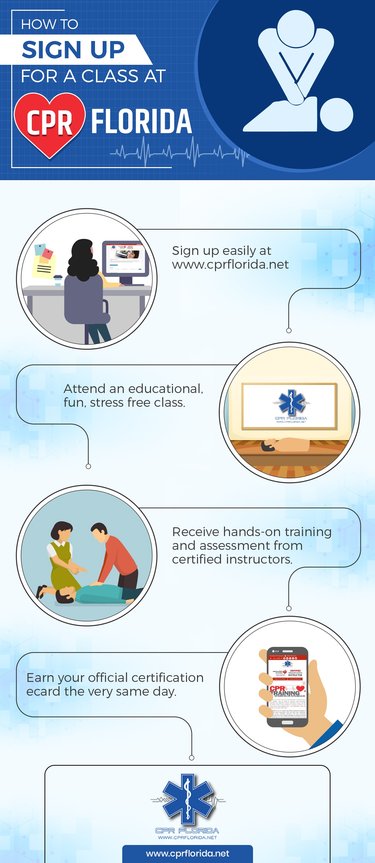Boca Raton CPR, AED, Healthcare Provider BLS, First Aid, PALS and ACLS AHA Training Certification Classes
How Do to CPR? Is CPR Effective? What Steps do you need to take and can you hurt them?
Some people do not want to do cpr...but the truth is this: If someone is dead, cpr can not hurt them, you can only make the situation better. Sudden cardiac arrest (SCA) kills over 900 adults each day in the USA. That is about 335,000 of the 550,000 annual deaths from coronary heart disease.The American Heart Association states that 95% of SCA victims die before reaching a hospital.
Ventricular Fibrillation (VF) is the most common cause of SCA. VF is a disruption in the normal electrical rhythm of the heart and can often be corrected quickly with a defibrillator. An Automated External Defibrillator (AED) resets the heart's normal electrical impulses in a VF victim by delivering an electric shock.
Brain death from lack of oxygen usually begins in 4 minutes and is usually complete in less than 10 minutes. CardioPulmonary Resuscitation (CPR) supplies a limited amount of oxygen to the brain, delaying the death of cells. Immediately providing CPR can double a person's chance of survival, and the sooner CPR is started, the greater the chance of survival. Around 75% of cardiac arrests happen in people's homes so you will probably perform CPR on a family member or friend. A typical SCA victim is a man 60-65 years old or a woman 65-70 years old, but it can happen to people of any age. SCA occurs twice as often in men as in women.
There is yet to be a documented case of HIV being transmitted due to performing CPR. The first out-of-hospital defibrillation device weighed over 100 pounds. AEDs now weigh less than 5 pounds. CPR saves lives and as more people become trained and AEDs become more common, more lives can be saved.
